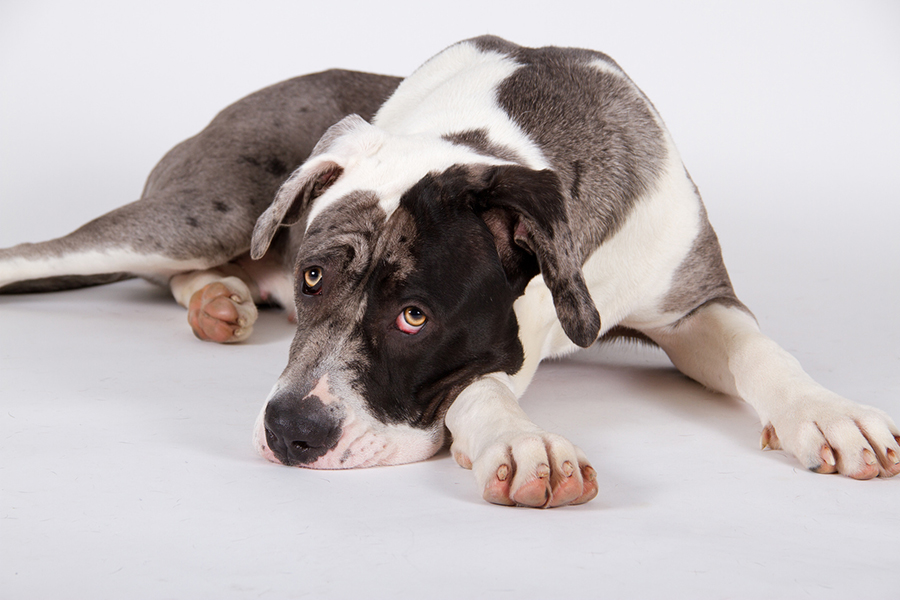Gastric Dilation Volvulus (GDV, “twisted stomach”)
What is GDV?
GDV, also called ‘bloat’, is a life threatening condition where the stomach initially bloats with air and food and may then progress to twisting on its central axis. The degree of rotation ranges from 90o to 360o and with severe torsion the spleen may become involved.
Which dogs are at risk?
Deep chested large and giant breed dogs are most at risk, for example Great Danes, Dobermans, Dalmatians, Weimeraners and Saint Bernards; however any breed can be affected. It may occur at any age; however middle aged male dogs are most at risk. Dog’s that have had their spleen removed are also at increased risk of GDV.
Why does it occur?
This condition isn't completely understood but risk factors include ingestion of large volumes of food and water, eating soon before or after exercise, stress and obstruction of stomach outflow. Genetics also seem to play a part.
Why is it an emergency?
Dilation and twisting of the stomach rapidly causes cardiovascular shock as dilated stomach puts pressure on the major veins of the abdomen, affecting the return of blood flow to the heart, as well as putting pressure on the diaphragm and the surrounding abdominal organs. The blood supply to the stomach wall is disrupted and may start to die and even rupture.
What signs will I see?
- Abdominal bloating may or may not be obvious
- Non productive vomiting and burping
- Looking at the abdomen and stretching out
- Restlessness
- Pale gums
- Rapid breathing and an elevated heart rate
- Collapse
How is GDV treated?
Seek veterinary advice immediately. The earlier these dogs are diagnosed and treated, the more favourable the outcome. Initially your vet will want to run a full blood profile to assess the degree of associated metabolic disturbances. X-rays will be taken to assess the degree of stomach dilation and determine whether the stomach has twisted. An ECG may also be needed if cardiac arrhythmias are present.
Patient stabilisation involves intravenous fluids, oxygen therapy and treatment of cardiac disturbances if present. Decompression of the stomach is attempted with the animal under general anaesthesia by passing a tube down the oesophagus into the stomach to remove gas and stomach contents. Decompression may not be possible when torsion is present and these cases require surgical intervention.
Surgery involves entering the abdomen to untwist the stomach and assess the health of the stomach wall, spleen and surrounding organs. Removal of devitalized sections of the stomach and spleen may be required in severe cases.
Once the stomach is back in the correct position a gastropexy should be performed. This procedure attaches the stomach to abdominal wall so it is unable to twist again. Without a gastropexy 75-80% of dogs will develop GDV again.
How can I prevent GDV?
Due to the high prevalence of GVD in certain breeds we recommend a prophylactic gastropexy to prevent this potentially life threatening condition. This can be performed as an elective preventative procedure, and may be done when your dog is sterilised.
There are several surgical gastropexy techniques. The surgery we offer is called a belt-loop gastropexy. Laparoscopic surgery is also available through specialist veterinary hospitals and we hope to be able to offer this service in our hospitals in the future.
Other preventative measures include
- Feeding 2-3 small meals daily
- Moistening food before feeding
- Avoid vigorous exercise, excessive excitement and stress and hour before and after meals
If you would like more information about GDV and preventing it please speak to one of our vets.




